5. Arrival is a puzzle picture in the tradition of Aronofsky and Nolan
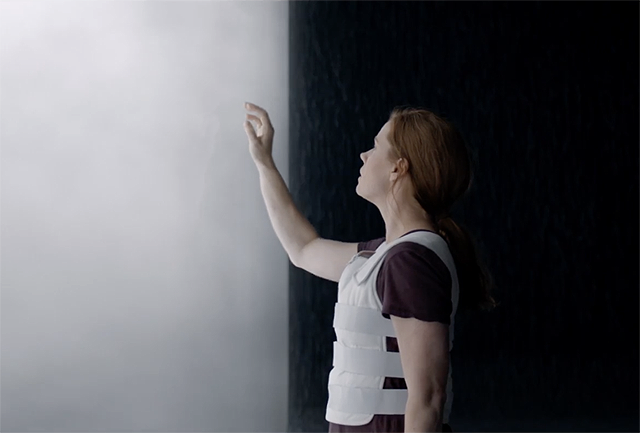
For fans of the more psychedelic films of Darren Aronofsky (namely 2006’s The Fountain) or Christopher Nolan’s work, specifically Memento (2000), The Prestige (2006), and 2010’s Inception (with acknowledgement to Jonathan Nolan who collaborated with his brother on all of these films).
There are other recent examples of puzzle films––Fincher’s The Game, Scorsese’s Shutter Island, Villeneuve’s own recent thriller Enemy, and pretty much everything by David Lynch––but for the sake of this abbreviated list let’s just identify the Nolan brothers and Aronofsky as the linchpins.
Like the characters in Inception or The Fountain, those in Arrival contest in surreal environments aspects of perception and the mind that most people only encounter in psychedelic mushroom trips, unless they’re enlightened yogis perhaps atop Mount Vesuvius. So yes, like those esteemed cinematic worlds, Arrival contends with clever conceits and Byzantine-like designs.
But where an artfully engineered sci-fi blockbuster like Inception decides to hinge everything on a cloying cop-out (the whole “was it or wasn’t it a dream” ending really kneecaps the film), or an earnest and personal film like The Fountain is so saccharine and New Age-y it risks alienating the audience (for the record it totally worked for me), Arrival takes us down the rabbit-hole with a risky and rewarding payoff that puts most enigmatic movies to shame.
Where Inception or The Prestige offered considerable (or contemptible) catharsis and closure, Arrival goes one further. Not only do we get to the crux of the film and Louise’s brilliantly and beautifully realized character, we get an emotionally swimming reward amidst a deeply satisfying finish that lingers and enriches the audience’s experience for some time afterwards and would certainly repay repeat viewings.
Arrival doesn’t end in a parlour trick, it ends in a satiating human experience that invites contemplation, sensitivity, and deep perception.
4. Arrival is topically extremely relevant
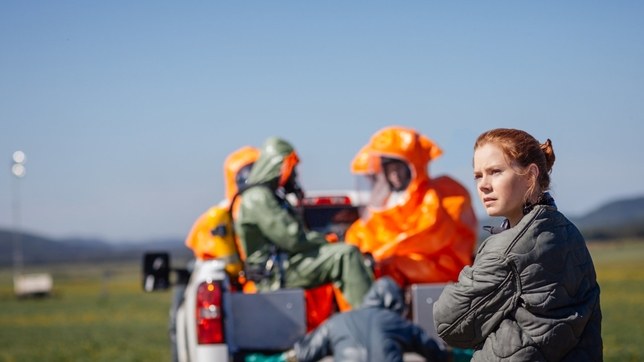
It’s terrifying and fitting, to an extent, that the heptapods’ arrival has enveloped America in a sinking sense of anxiety, uncertainty, and deep dread, just like this current political season and the annoying/embarrassing/threatening possibilities in the unfortunate possibilities of Trump’s America.
A film like Arrival, which details ideas of finding and nourishing a common language over getting snared in translation traps, of opting for unity over worry, and intuition over ignorance. The Western World needs this kind of movie now more than ever.
There’s also a tiny but telling sequence early on in Arrival when Louise is approached by Colonel Weber (Forest Whitaker) to take this very serious charge. The U.S. Army had called on Louise’s expertise in the recent past with a Farsi translation. “You made quick work translating those insurgent videos,” Weber reminds her. Without missing a beat Louise fires back, “you made quick work of those insurgents!” Those can be the stakes when military force and extremist politicking are in cahoots.
3. For all its arthouse aspirations Arrival is still a visually breathtaking spectacle
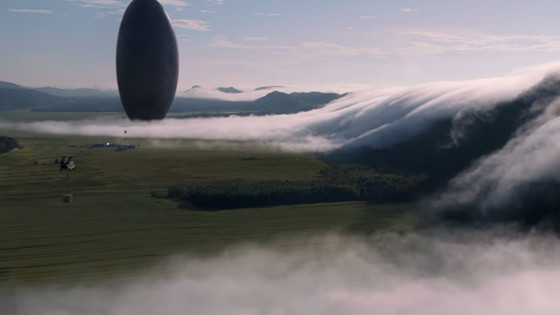
That Arrival is an intelligent and cerebral coup de pop cinema it still looks, feels, and aspires to be a big-ticket extravaganza with mass appeal. Yes it may waiver towards millennial blue devils, but so did The Martian and Interstellar.
Here Villeneuve and cinematographer Bradford Young (Ain’t Them Bodies Saints) detail a blue-grey palette that’s muted yet suitably histrionic in the melancholy it initially incenses. And beyond this rather ethereal approach both Villeneuve and Young have found very suitable collaborators in visual effects guru Louis Morin and perceptive production designer Patrice Vermette.
This dream team of visual storytellers explore numerous expressions from unexpected noir-like angles, and spacey, zero-g sequences and set pieces that toss the viewer off balance, and not just visually but mentally as well. There’s an emotional dreamscape ambience and atmosphere that’s wonderfully and tangibly brought to life in Arrival that is sure to be remembered come awards season.
2. Arrival is refreshingly old and new
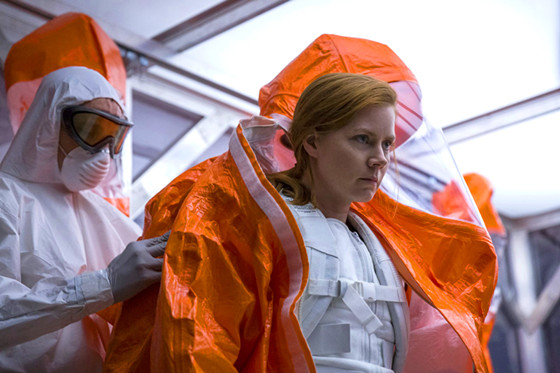
Deeply concerned with ideas and intrigue, Arrival revisit all the alien-invasion formalities we’ve come to expect from multiplexes and then takes these conventions and imbues them with an intelligence and a flourish that, say, Roland Emmerich could never muster. I mention Emmerich because, though Arrival shares a similar ingress of super-colossal spaceships suddenly appearing threateningly across the globe at once as with Independence Day (1996), they each ascribe to different declarations.
Where Emmerich’s film darts towards the destruction of beloved monuments, France’s capital, ridiculous rejoinders like “Welcome to earf–!”, and bombastic American flag-waving, Villeneuve’s much more moved by elegance and evolution. Neither film skimps out on dazzling visuals, but one stimulates the brain, the other a popcorn-cramming reflex.
Several strident homages are on offer in Arrival; as previously mentioned the alien crafts resemble 2001’s monolith, the aliens themselves share an almost Lovecraftian physiognomy, and Laura’s awakening has a Solaris-like symmetry and arthouse articulation that’s also underscored by Jóhann Jóhannsson’s at times very Malick-like score.
And for the old school crowd, Robert Wise’s 1955 alien invasion classic The Day the Earth Stood Still is rigorously, respectfully, and repeatedly referenced.
It’s not that Villeneuve is ripping-off any of these other motion pictures, far from it. He’s simply acknowledging the paradigm before he astonishingly and muscularly transcends it.
1. Amy Adams is the star and the soul of Arrival
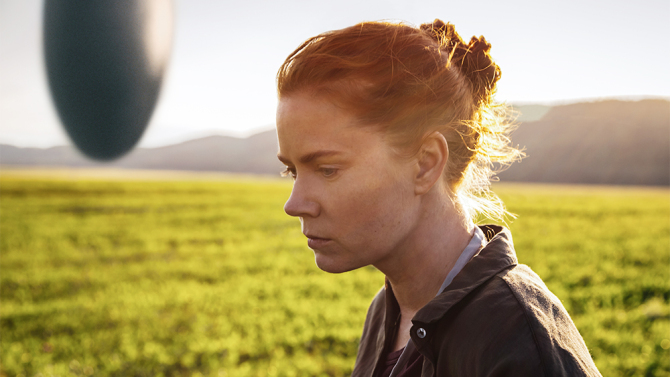
Amy Adams is astonishing in a gracefully calibrated performance as Louise. For all intents and purposes Arrival is all roll out for Adams and her uncanny capacity to confidently, quietly, and efficaciously fuse intelligence, and compassion with a coolness of manner and a remarkable self-restraint.
Villeneuve has a similar stacked-deck with Arrival as he showcased in Sicario where he takes a luminous female lead––here we have Adams in place of Emily Blunt––and precariously positions her in a scenario that effectively torpedos, or threatens to, her studiously accomplished expertise. It’s a deft maneuver and Adams has brought her A-game.
Louise holds her own as hero but also, and more importantly for a genre film, an articulate and deeply intelligent woman who is nothing of a caricature or know-it-all cliché. From the opening frame and on, Arrival articulates Louise’s intuitions, her emotions, her bright introspection, and her tender inner life in numerous ways that make not only the film’s final payoff a real bonanza but a deeply resonate one as well.
The poetic grandeur that Villeneuve aspires to and achieves is due in large part to Adams’ extensive talent. She makes love and loss both sincere and elegantly substantiated.
Author Bio: Shane Scott-Travis is a film critic, screenwriter, comic book author/illustrator and cineaste. Currently residing in Vancouver, Canada, Shane can often be found at the cinema, the dog park, or off in a corner someplace, paraphrasing Groucho Marx. Follow Shane on Twitter @ShaneScottravis.